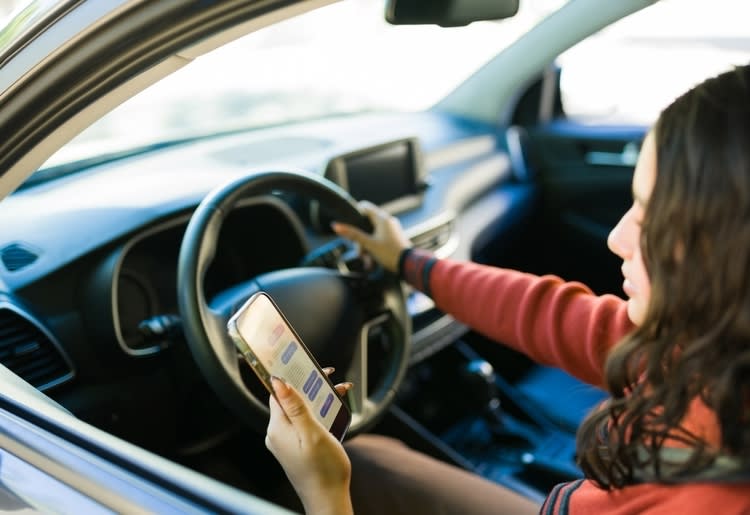
Understanding the most common causes of car accidents and their insurance implications can help you become a safer driver and be better prepared should an accident happen.
Being well-informed about these risks is essential, which is why we recommend you compare our best car insurance providers to ensure you have appropriate coverage for your specific situation and driving habits.
Key Insights on Common Car Accident Causes and Insurance
The cause of an accident directly impacts fault determination and subsequent premium increases.
DUI-related accidents cause the highest premium increases (95-200%), followed by distracted driving (40-60%).
Most insurers offer accident forgiveness programs that can protect you from first-time accident surcharges.
Comprehensive coverage is essential for weather-related incidents.

How Accidents Can Impact Your Insurance
The cause of a car accident plays a crucial role in determining fault and insurance outcomes. Here's how different accident causes typically affect your premiums:
| Accident Cause | Average Premium Increase | Duration of Increase |
|---|---|---|
| DUI | 95-200% | 3-5 years |
| Distracted driving | 40-60% | 3 years |
| Speeding | 30-40% | 3 years |
| Running red lights | 25-35% | 3 years |
| Following too closely | 20-30% | 3 years |
| Weather-related | 10-20% (if at fault) | 3 years |
| Car defects | 0-15% (depends on maintenance) | Varies |
| Fatigue | 30-40% | 3 years |
| Inexperienced driving | 15-25% (additional to age factors) | 3 years |
The Top 9 Accident Causes and Their Insurance Implications
1. Distracted Driving
According to Traffic Safety Marketing (by NHTSA), 3,308 people were killed in 2022 and an estimated additional 289,310 people injured in traffic crashes involving distracted drivers. Distracted driving involved:
- Manual distractions: Taking your hands off the wheel (e.g., eating or adjusting controls).
- Visual distractions: Looking away from the road (e.g., checking your phone or GPS).
- Cognitive distractions: Losing focus due to daydreaming or emotional stress.
Insurance impact: A distracted driving accident typically increases premiums by 40-60%. Many insurers now offer usage-based programs that monitor phone use while driving, offering discounts for those who avoid distractions.
2. Driving Under the Influence (DUI)
Driving under the influence occurs when a person operates a vehicle while impaired by alcohol or drugs, including prescription medications that affect cognitive function or motor skills. In most states, the legal blood alcohol concentration (BAC) limit is 0.08%, though commercial drivers face stricter limits of 0.04%.
Even at BAC levels below the legal limit, driving ability can be significantly impaired. The National Highway Traffic Safety Administration (NHTSA) reports that approximately 37 people die daily in drunk-driving crashes in the US. In 2022 alone, over 13,500 people lost their lives in alcohol-impaired driving incidents, accounting for nearly a third of all traffic fatalities.
Insurance impact: DUI convictions result in the highest premium increases (95-200%) and may force you into high-risk insurance pools. Some insurers will drop your coverage entirely, requiring you to seek specialized high-risk providers.
3. Speeding
According to the Insurance Institute for Highway Safety (IIHS), speeding is a factor in approximately 29% of all traffic fatalities. Additionally, the World Health Organization notes that even small increases in mean speed can significantly raise fatal crash risk.
Insurance impact: Speeding tickets alone increase premiums by 20-30%, while speed-related accidents can raise rates by 30-40%. Multiple violations may trigger "reckless driver" surcharges.
4. Weather-Related Accidents
These crashes happen due to rain, snow, ice, fog, or other adverse conditions. According to the Federal Highway Administration (FHWA), weather-related crashes account for over 418,000 injuries annually on average.
Insurance impact: Fault determination can be complex in weather-related accidents. Comprehensive and collision coverage is essential, as basic liability policies may not cover weather-related damages.
5. Fatigue
According to the NHTSA, drowsy driving causes 91,000 crashes annually, resulting in 50,000 injuries and 800 fatalities—accounting for approximately 1-2% of all crashes, injuries, and deaths. Similarly, drowsy driving was reportedly involved in 1.8% of all fatal crashes.
Watch for these indicators that you're too tired to drive safely:
Difficulty focusing or keeping your eyes open
Frequent yawning or rubbing your eyes
Drifting from your lane or missing exits
Inability to remember driving the last few miles
Delayed reactions to traffic signals or hazards
Insurance impact: Drowsy driving accidents are treated similarly to distracted driving, with premium increases of 30-40%. Unlike alcohol, there's no objective test for fatigue, making fault determination challenging.
6. Following Too Closely
Following too closely, commonly known as tailgating, happens when drivers fail to maintain sufficient distance between their vehicle and the one in-front of them.
Safety experts recommend the "three-second rule"—maintaining at least three seconds of travel time between vehicles under ideal conditions and longer in adverse weather or poor visibility.
Rear-end collisions often result in whiplash injuries and significant vehicle damage, especially at higher speeds.
Insurance impact: The rear driver is typically presumed at fault, resulting in premium increases of 20-30%. Multiple tailgating accidents may trigger high-risk classification.
7. Running Red Lights
Running red lights is one of the most dangerous traffic violations. It often results in side-impact or "T-bone" collisions that strike vehicles at their most vulnerable points.
In fact, The City of Colorado Springs police department reported that 28% of crash deaths that occur at signalized intersections are the result of a driver running through a red light.
Drivers usually run red lights during morning and evening rush hours, with Friday being the peak day for violations. People usually do this when they’re in a hurry, believing they can beat the light and frustration with traffic signal timing.
Insurance impact: Red light violations are considered serious infractions, with premium increases of 25-35%. Traffic camera evidence typically makes fault determination straightforward.
8. Vehicle Defects
Your car's mechanical condition plays a crucial role in road safety. While a relatively small percentage of crashes officially involve vehicle defects, experts believe this number is likely underreported. Tire problems represent a significant portion of these defect-related accidents.
Regular maintenance is good for your car, but it’s also essential for safety. Most mechanical failures stem from neglect rather than manufacturing issues. Even well-maintained cars can experience unexpected problems, especially older models or those driven in harsh conditions.
Insurance impact: If the defect resulted from poor maintenance, you may be deemed negligent. If it's a manufacturing defect, your insurer may pursue subrogation (reimbursement for insurance payouts) against the manufacturer while covering your immediate costs.
9. Inexperienced Driving
New drivers face unique challenges on the road. According to the Centers for Disease Control and Prevention (CDC), teen drivers (16-19) have crash rates nearly three times higher than drivers over 20.
Novice drivers often struggle to spot hazards, are overconfident, get distracted more easily, and lack experience with emergency situations. The first year behind the wheel is especially risky, with accident rates dropping significantly as drivers gain experience.
Insurance impact: New drivers already pay higher premiums; accidents add 15-25% surcharges on top of these elevated rates. Many insurers offer good student discounts and completion of driver education programs to offset these costs.
Smart Insurance Strategies for Accident Prevention
Knowing the different types of car insurance is crucial for protecting yourself financially after an accident.
Coverage Options for Different Risks
Comprehensive coverage: Essential for weather-related damage, vandalism, and theft.
Collision coverage: Covers vehicle repairs regardless of fault.
Uninsured/underinsured motorist: Protects you when the at-fault driver lacks adequate coverage.
Personal injury protection: Covers medical expenses regardless of fault (required in no-fault states).
Discount Opportunities After Accidents
Even after an accident, you can cut car insurance costs by:
Completing defensive driving courses (5-15% discount).
Installing telematics devices that monitor driving habits (up to 30% savings).
Bundling multiple policies with the same insurer (10-25% discount)
Asking about accident forgiveness programs, which prevent rate increases after your first at-fault accident.
Bottom Line
Understanding what causes most car accidents helps you drive more safely and choose better insurance. While you can't control the weather, you can avoid risky behaviors like texting or speeding.
Make sure your insurance matches your driving habits and needs. When shopping for car insurance, remember to compare quotes from different companies, consider your personal risks, and ask about safe driver discounts. The best protection comes from both good coverage and careful driving.

